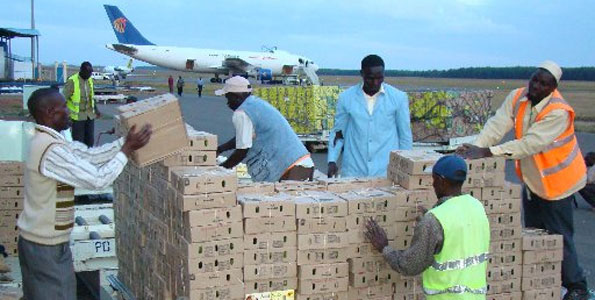Irrigation investments cushion Zimbabwe
INCREASED investments in climate-proofed agriculture are set to cushion Zimbabwe from the projected adverse weather patterns in the forthcoming season by ensuring adequate food supply throughout the year from the vibrant irrigation projects across the country.
As Zimbabwe approaches the 2023/2024 summer cropping season, preliminary weather projections for Southern Africa, which have been noted by the Government, point to an El Nino rainy season that would be characterised by below-normal to normal rainfall.
While low rainfall patterns usually result in the country experiencing lower farm production, the Government is confident that investments in the agricultural sector will make a huge difference and cushion the country from hunger.
Since 2019, the Government has invested US$2 billion towards the construction of dams and rehabilitation of irrigation schemes in a bid to cushion the sector while also appreciating that rain-fed farming is no longer viable.
Dams such as Lake Gwayi Shangani in Matabeleland North, Tuli-Manyange in Matabeleland South are under construction with the Government reiterating that the new water bodies will contribute to increased irrigation agriculture.
The Government has also revived dormant irrigation schemes including Bubi Lupane Irrigation Scheme in Matabeleland North and works are on course to revive Silalatshani Irrigation Scheme in Matabeleland South, among others.
So far, 203 000 hectares of land have been placed under irrigation with the Government targeting about 350 000ha of land under irrigation by 2025.
Speaking on behalf of President Mnangagwa at the ongoing Africa Climate Summit being held in Kenya, outgoing Lands, Agriculture, Water and Rural Development Minister Dr Anxious Masuka said Zimbabwe is committed to strengthening its mitigation strategies against the adverse impact of climate change.
The summit is meant to proffer solutions for the continent ahead of the United Nations Climate Change Conference COP 28 to be held in November in the United Arab Emirates. Dr Masuka said climate change has increased the frequency of droughts, heat waves, destructive tropical cyclones, floods, and other severe weather events.
He noted that climate catastrophes have claimed many lives, damaged infrastructure including locally, displaced people and retarded development with the country’s agriculture sector being the worst affected. Dr Masuka said the Government has, however, made deliberate efforts to cushion the country’s agricultural sector against the extreme effects of climate change.
“Our agriculture sector remains most vulnerable to climate change with millions affected due to increasing frequency of droughts. This year the whole of Southern Africa is predicted to suffer the severe El Nino effects,” he told the gathering.
“In response, Zimbabwe has adopted climate-proofed agriculture based on sustainable intensive conservation agriculture, rapid dam construction and irrigation development,” said Dr Masuka.
“As a result, Zimbabwe has been food self-sufficient for the past three seasons, and since last year, has a wheat surplus. Efforts to consolidate this success require further massive investment in dams and irrigation development.”
Similarly, he said the Government is also working towards providing water across the country’s 35 000 villages and 9 600 schools.
Dr Masuka said Zimbabwe will leverage on its natural resources to mitigate climate change effects and ensure sustainable livelihoods. He said for instance, in the built environment and transport sectors, Zimbabwe is making strides to embed the green cities concept hence the country’s decision to build a smart city (Mount Hampden) near Harare.
“As will be known by many, Zimbabwe hosts substantial deposits of nickel, lithium, graphite, and other rare earth minerals and can, therefore, contribute to the transition to the green economy.
“Additionally, Zimbabwe has mooted the establishment of an integrated mining to energy park for value addition and beneficiation to the stage of manufacturing lithium batteries to leverage our e-vehicle policy,” said Dr Masuka.
Dr Anxious Masuka
He said Zimbabwe has set an ambitious economic target to reduce greenhouse gas emissions by 40 percent per capita, below the projected business-as-usual scenario by 2030 while increasing investments in the energy sector.
“Zimbabwe has 54 percent electricity access and plans to achieve universal access to electricity services by 2030. Zimbabwe is accelerating investment in renewable energy such as geothermal, wind, hydro, and solar, which now contribute about 40 percent of Zimbabwe’s energy mix and we plan to increase to 60 percent by 2025,” he said.
“While Zimbabwe continues to use coal, we have now incorporated technologies that increase coal use efficiency, while containing the use of diesel in the stabilisation of the old coal-fired units and replacing these with plasma technology. Huge capital investment is required to fuel transition to hydro-power.”
Dr Masuka said African countries need to speak with one voice ahead of the COP 28 summit and challenged developed nations to fulfill their pledges to the Paris Agreement.
He said just like many other African countries Zimbabwe remains committed to implementing resolutions that were made. The minister, however, said Zimbabwe does not support the issue of seeking international support to finance the climate change agenda as this could escalate the national debt overhang.
“The biggest challenge to accelerate Zimbabwe’s adaptation plan is financing. Adequate, predictable, reliable, and consistent climate finance for the achievement of Zimbabwe’s national development plans is required,” he said.
“Suggestions for global taxes to finance our climate actions will mortgage Zimbabwe further increasing our debt burden to unsustainable levels.
“Equally, while the discussion on carbon credit is welcome, this must not replace or reduce the historically agreed global commitments. Zimbabwe has just passed legislation to guide the carbon credits market.” —chronicle









